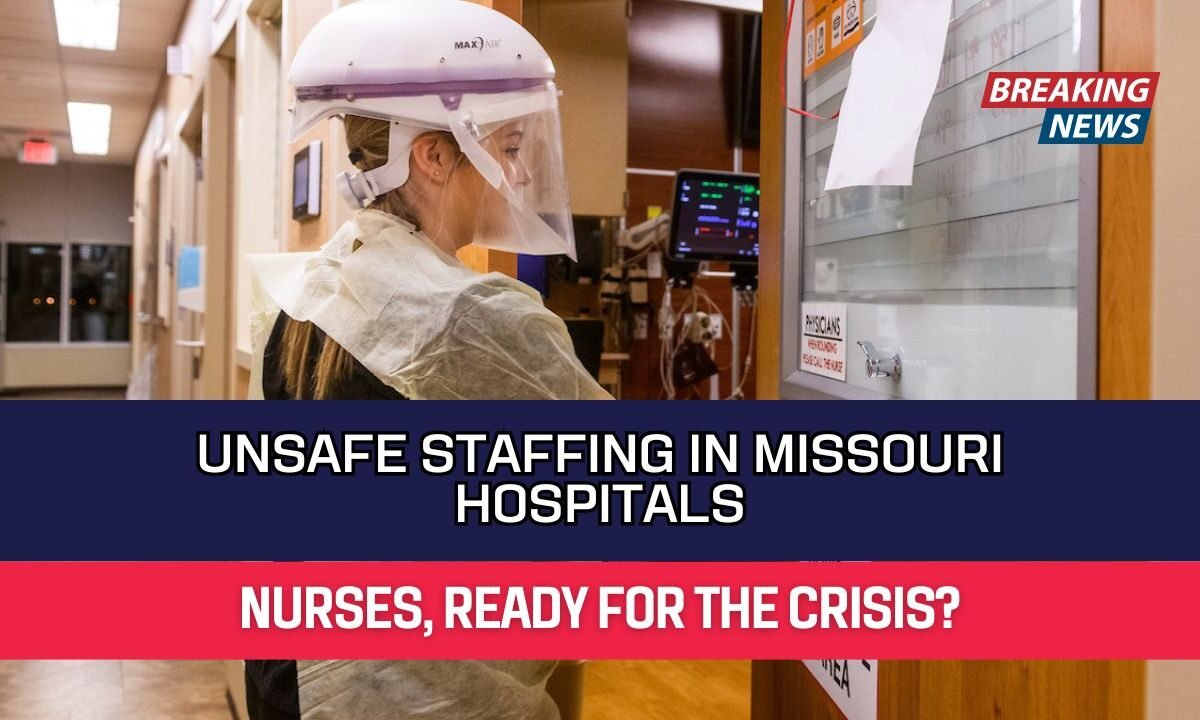Nurses face challenges every day when they go to work. Unsafe staffing ratios and overwhelming workloads can put both patients and nurses at serious risk.
In Missouri, the impact of this staffing crisis is visible in the stories of nurses like Kortni Davis, who worked in Missouri hospitals from 2018 to 2021.
The Strain of Unsafe Staffing
Kortni Davis recalls a difficult shift during her time as an ICU nurse. Starting her day with two patients, she found one of them rapidly declining at 7:30 a.m. Kortni did not leave the patient’s side until 5 p.m., except for quick supply runs.
“We were short-staffed, and I couldn’t check on my other patient as often as I should,” Kortni explains. Though her other patient remained stable, the experience highlights the dangerous effects of unsafe staffing.
What Unsafe Staffing Looks Like in Practice
In situations like this, nurses may find themselves unable to attend to basic needs like answering call lights, administering medications on time, or helping patients with mobility.
Even critical safety checks, such as double-checking medications, may be skipped, putting both patients and nurses at risk. Delayed care and rushed tasks can quickly lead to dangerous situations.
Missouri’s Nurse Shortage: Still a Major Concern
While Missouri’s nurse vacancy rate improved to 15.6% and turnover reduced to 16.3% by 2023, hospitals continue to struggle with financial and workforce pressures.
Replacing a single bedside RN costs hospitals about $61,000. The national shortage of nurses, with nearly 97,000 nurses leaving the profession between 2020 and 2022, has left Missouri vulnerable to further staffing crises.
Even though new nursing graduates are entering the workforce, experienced nurses continue to leave, creating gaps in critical skills like judgment, crisis response, and mentorship.
These gaps make it harder for new nurses to handle unsafe assignments without support. Kortni Davis shared, “We lost experienced nurses, the kind of nurses you can rely on in a crisis.”
The Broader Issue: Overwhelming Workloads
Missouri’s staffing crisis isn’t limited to nursing. With short staffing in many departments, nurses are often forced to take on additional duties outside their normal roles, such as tasks in pharmacy, housekeeping, dietary, and more.
Kortni explains, “We are given more work, having to do the tasks of other departments on top of our own nursing duties.”
These added responsibilities contribute to nurse burnout, putting the entire hospital system at risk. The stress and lack of support can lead to serious errors that harm both patients and nurses.
Kortni’s experience, where she often went without meals and struggled to manage breastfeeding, shows the personal toll of this crisis.
The Need for Safe Staffing Laws
While staffing laws aren’t a complete solution to the nurse shortage, they can provide a baseline of safety. By setting staffing ratios that ensure nurses aren’t overwhelmed, these laws can help reduce nurse burnout, improve patient outcomes, and strengthen nurse retention.
Research has shown that inadequate staffing leads to higher risks of mortality, falls, and infections.
Missouri’s Path Forward: Balancing Safety and Flexibility
Missouri has options for tackling the staffing crisis. It could gradually phase in staffing ratios, offer targeted support for rural hospitals, and expand nursing education programs through scholarships and loan forgiveness. These steps can help balance financial challenges while ensuring that patient safety is prioritized.
Key Highlights:
- Unsafe staffing puts both nurses and patients at risk.
- Missouri’s nurse vacancy rate was 15.6% in 2023.
- Replacing a nurse costs hospitals $61,000.
- Experienced nurses are leaving, creating gaps in critical skills.
- Nurses are tasked with responsibilities beyond their roles, leading to burnout.
Nurse Vacancy and Turnover in Missouri
| Metric | Value |
|---|---|
| Nurse Vacancy Rate | 15.6% |
| Nurse Turnover Rate | 16.3% |
| Cost to Replace One Nurse | $61,000 |
| Nurses Leaving Nationwide (2020–2022) | 97,000 |
Missouri lawmakers are expected to face staffing ratio legislation in the upcoming year. Until effective laws are passed, unsafe staffing remains the default, putting both patients and nurses at risk.
Kortni’s story makes it clear that without proper staffing regulations, the cycle of nurse turnover and patient harm will continue.




